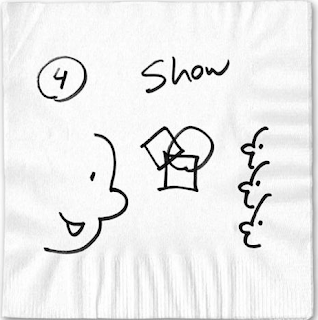
In an earlier blog post I argued that the funding model for software startups is fundamentally changing. This is hardly an argument and more of an observation of the expense side going down for IT startups and legacy funds largely still caught in their bubble investment models.
There is a LOT of talk in the entrepreneur and VC community about the survivability of this model especially regarding the ability to raise more funds in the coming year. And with that, how many VC's will go into hibernation, change models (i.e. lower raise from largely non-institutional money focusing on companies requiring less capital or switch focus to industries with larger capital requirements), or quietly close their doors.
Seth Levine has an interesting article firing back at the Business Week article on How Venture Capital Lost it's Way. Here's another from Fred Wilson earlier this year on the math of venture capital. And Above the Crowd with his post on Asset Allocation and Venture Capital.
In the face of these facts the early stage software and software as a service (SaaS) early stage ecosystem remains healthy. Companies are figuring out how to generate cash flow earlier, get by with less and raise less, and in increasing numbers are eschewing venture capital paths altogether. Angels have stepped in to fill a larger role in seed stage investment but so too have the entrepreneurs and developer communities.
Contract developers are a lot like angel investors with the exception that they're throwing development skills instead of money in alongside the founders. Their "yes/no" analysis is a mix of knowledge of the founders (friends), attractiveness of the problem/solution (skills), and recognition of the market (money - or Net Present Value - NPV). There's a mix of people who've been through the bubble(s), heavy in skills and slightly jaded on the NPV calc. And there are the people who haven't been through the bubble, are anxious to make their mark and want to believe but are much more pragmatic than similar folks in the heady bubble days.
Both of these groups are willing to work for some amount of equity, and depending on the friendship card and personal cash flow needs, some requirement of cash. After all, food doesn't find its way to the table on it's own. This enables you to get your product built without having to hire someone full time and at a discounted rate. I must admit that I've put in a hell of a lot of time on my recent project to get it off the ground doing a large chunk of the development, but I've also managed to get the entire beta launched in the very low five figure range.
I've put together a few of these agreements and they're all fairly similar. Please add a comment if you would like a sample version of one and I'll send it to you. And if your needs are greater, I'll refer you to friend and former Cooley attorney Michael Stack who has helped with some of these agreements in the past.
The mechanism is essentially this:
- Agree upon a discounted rate per hour that will be paid out in cash
- Agree upon a bonus compensation that involves granting a set number of shares per hour that feels fair. You might be able to back into this number by giving a nod to what the company might be worth if someone priced a round. So let's say you think the company could be worth $1M pre-money and there are $1M shares outstanding. After the discounted rate, the developer is willing to take in a bonus of 50 shares per hour worked.
- Create an agreement that contains both the discounted rate, bonus stock rate, and expectations, ceilings on hours, IP protection.
- 1099 the contractor for the discounted rate plus the bonus stock at the current stock value (which at a very early stage could be as low as .01/share)
- Downside to be aware of is a larger pool of shareholders in your company and some additional dilution.








